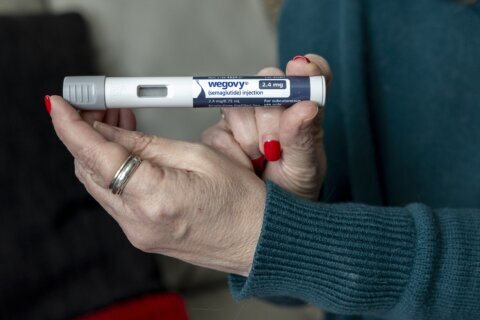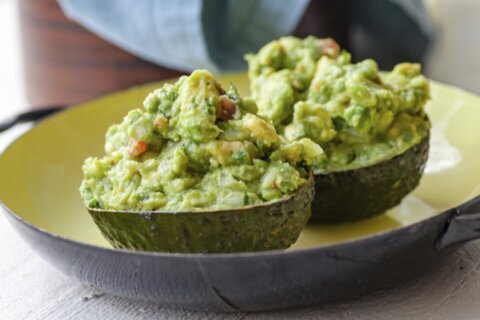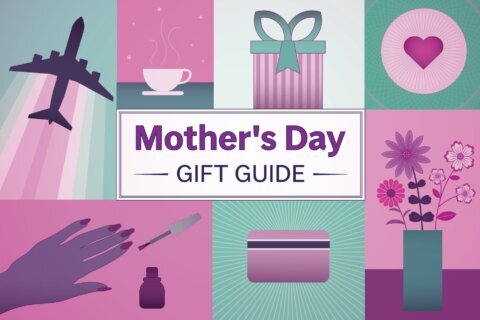(CNN) — Step aside, influencers.
We’ve all seen those youthful, photogenic people who promote fashions, foods or services to their large followings on TikTok and Instagram.
But now a new breed of “deinfluencers” has arrived, and they’re saying that materialism and overpriced trends are no longer in style. As consumers watch their spending during these inflationary times, this emerging group of social media users is urging people to evaluate whether they really, really need that $185 weighted blanket.
Their messages are simple and straightforward: These items are overhyped, you don’t need them, and here’s why. Sometimes they suggest other options. They also talk about sustainability and the cost of waste associated with specific industries, such as beauty and fashion.
Deinfluencers are growing in popularity. On TikTok, for example, 582 million of the 584 million total views for the #deinfluencing hashtag occurred in the 12 months, the platform said in May.
To get a deeper sense of what deinfluencing is – and isn’t – we talked to people who understand it best.
What is deinfluencing?
Deinfluencing is an emerging social media trend that discourages consumers from buying certain products that the deinfluencer has found to be indulgent, ineffective or not worth the money, says Kris Ruby, a social media analyst and president of Ruby Media Group.
It comes as social media has become crucial for marketing products and services – especially to younger consumers. A recent study showed that 87% of people surveyed followed a brand, visited its website or made a purchase online after they saw a product advertised on social media, making visual platforms such as Instagram and TikTok lucrative for promotions.
Brands and companies pay influencers to market goods, experiences and services to their followers. In short, influencing is trying to persuade social media users to buy certain products.
Deinfluencing is the opposite of that – but with some caveats.
Isn’t that just influencing by another name?
Ruby certainly thinks so.
“Rather than saying buy this, they are saying – don’t buy this. Both are forms of influencing. It is no different than saying, ‘Vote for this candidate,’ versus ‘Here’s why you shouldn’t vote for this candidate,’” Ruby says.
However, she says, deinfluencing and the backlash against overconsumption mirror a growing trend toward minimalism. Instead of buying a haul of “must haves” touted by a social media figure, this trend urges consumers to evaluate whether they need an item before they spend money on it.
Mikayla Mains, 28, is a content creator from St. Louis who says she connects with deinfluencer culture. She says the trend feels refreshing at a time when social media marketing can feel like pressure by suggesting you need pricey luxuries to feel good about yourself.
“As someone who’s always struggled in the influencer realm with the morals of influencing, I love to see us taking a turn in a different direction,” she says.
“While I don’t think influencing is all bad, I do like that we’re taking a step back to rethink how we consume not only products, but also content.”
Michelle Skidelsky, a Canadian deinfluencer, used a recent post to tell her 173,000 TikTok followers that they don’t need a new wardrobe at the start of every season.
“First of all, new clothing that’s not like fast fashion is so expensive these days,” she says. “If you’re going on a trip, if you’re going to a concert, you probably don’t need an entirely new wardrobe for either of those things. Make do with what you have, and live within your means.”
Skidelsky then discourages people from going overboard on summer accessories such as sunglasses, purses, belts and totes.
“You definitely don’t need multiple new pairs of sunglasses,” she says. “Listen, I know it’s really fun to have your sunglasses match your outfit and to use them as accessories and whatever. But how does your bank account feel about you constantly buying new sunglasses? Probably not great.”
How much can we trust deinfluencers?
Not everyone is sold on deinfluencing. Aria Connor, 36, creates lifestyle content on social media and says some deinfluencers are not in it for the right reasons.
“A lot of the people participating in the deinfluencing trend are more interested in making people feel bad for spending their money in a way that doesn’t align with the deinfluencer’s values or budget,” she says.
Others, she says, are simply trying to persuade people to buy some other product. Connor doesn’t believe either is helpful to consumers.
“There are so many deinfluencers telling their audience, ‘Don’t buy that. Buy this.’ And in that case, stop calling it deinfluencing,” she says. “Just call it a difference of opinion on what the best products are.”
Some deinfluencers suggest their followers avoid specific products, while others speak more generally about not wasting money on items that people don’t really need. Ruby says it is not clear whether some deinfluencers are getting paid by rival brands to disparage products.
But those who tell followers what to avoid may have more credibility than people who only share recommendations on what to buy, she says. Ruby says deinfluencers may instill more trust in their followers because their advice sounds honest.
Mains, who has 13,000 TikTok followers, says deinfluencers can bring much-needed balance to social platforms that encourage overconsumption and have been blamed for a rise in mental health issues among adolescents.
But social media advice on what to buy or what not to buy is not all that meaningful, she says. Instead deinfluencers should be getting people “to question how we’re consuming, what we’re consuming and why we’re consuming (it),” she says.
“The problem with a new movement like this is everyone gets to kind of make up their own meaning behind it,” she adds.
Some say deinfluencers help hold brands accountable
Victoria Sola, an influencer who creates beauty content, says deinfluencing promotes honest conversations about products and empowers underrepresented consumers.
As an example, she cites deinfluencers who call out brands that exclude products for people of color.
These deinfluencers help promote transparency and hold brands accountable, says Sola, who has 17,000 followers on TikTok and has challenged the effectiveness of some sunscreens on people of color.
“Many people lose trust in influencers who just want to get paid and forget that on the other side, there is a person who just wants you to speak to them on an honest, real level,” she says.
Ruby, the social media analyst, offers another perspective. Influencing and deinfluencing on social platforms aren’t that different, she says.
“To be deinfluenced, you have to be influenced to begin with. I think the deinfluencing trend takes place within an echo chamber social media system where people are … familiar with the products being deinfluenced,” she says.
The key for consumers, she says, is not trusting everything you see on TikTok, YouTube or Instagram. That way, you don’t need to be deinfluenced.
The-CNN-Wire
™ & © 2023 Cable News Network, Inc., a Warner Bros. Discovery Company. All rights reserved.







